To supplement my ongoing fully-painted projects, I plan to build a series of model kits that'll involve minimal work. Minimal here refers to either (i) a straight-out-of-the-box build without any painting or topcoat, but maybe with some panel-lining as well as use of stickers and/or decals; or (ii) a build in which selected areas are painted while others are only top-coated, panel-lining is applied, and either stickers or decals are used. If a kit is fully-painted, then I consider more than minimal work has been put into it. In this Bandai Real Grade Evangelion Unit-00 kit, I'll be doing minimal work type (i).
.jpg) |
Bandai Real Grade Evangelion Unit-00 plastic model kit
|
Up to this point in time, I have yet to work on any of Bandai's Real Grade (RG) model kits. To the best of my knowledge most of the kits in this line of product are of a scale similar to the High Grade (HG) ones i.e. 1/144 scale. However Bandai does state the scale for its Evangelion RG series so I'm assuming they are not exactly 1/144 scale. In terms of sheer size alone, the Evangelion RG kits are quite big with the height of this particular Evangelion unit approximating 19 cm from the feet to the top of its shoulder pylons . Below are side box art showcasing the assembled kit.
.jpg) |
Side box art showcasing the versions of Evangelion Unit-00 that can be build; ...
|
.jpg) |
... the kit's various gimmicks and how it looks build straight out of the box unpainted ...
|
.jpg) |
... as well as a close-up computer generated view of the EVA-00.
|
Nowadays Bandai model kit instructions tend to come in both Japanese and English languages. They also tend to have colored sections amidst a generally black and white layout. These sections usually display some backstory for the kit in question, sticker/decal placement and color guide, etc.
.jpg) |
Manual comes with Japanese and English instructions as well as some color sections
|
Unlike say the older Bandai HG kits, the molded plastic parts found in RG kits are noted for having much better color accuracy and a better finish. What these means for the average scale modeler is that there is a high chance you don't have to paint the RG kit in question to have it look good. Why so? Well, Bandai's solution to a kit with low color accuracy is to use color correcting stickers. The end result of having to use such stickers is never good, so you end up better off painting the parts. Also with a better quality gloss and matte finish, the parts can look nearly like a pained part.
With all this being said, a scale model kit will almost always still look better painted than not. Nonetheless, these RG kits now blur the lines a little bit more between how a painted and unpainted kit will look like. In other words, the RG kits give the scale modeler a more valid option to not paint a kit, and it'll be the option I'll take for this kit to see how it'll fare.
.jpg) |
Sprue A: Soft matte white plastic parts for the leg, ankle, and feet armor
|
.jpg) |
Sprue B1: Hard semi-gloss gray plastic parts, mainly for the legs, and the back of the knees
|
.jpg) |
Sprue B2: Hard glossy yellow plastic parts for the chest, shoulder pylon, feet, arms, etc.
|
.jpg) |
Sprue C: Medium-hard semi-gloss black plastic parts for the inner frame, joints, and knives
|
.jpg) |
| Sprue D: Medium-hard semi-gloss black plastic parts for the inner frame/joints of the leg, knee, and feet |
As I mentioned in the preceding paragraph, apart from the color accuracy there is also the higher quality finish of the Evangelion's molded plastic parts which gives them less of a toy-like look. I am particularly impressed with the soft matte white finishes for the white parts, and the semi-gloss sheen to the gray and black parts. And although I feel the yellows still look a bit toy-like in their finish, I suppose they aren't as bad as some yellow part I've seen in the past.
.jpg) |
Sprue E: Hard semi-gloss gray plastic armor, inner frame, and joints parts for the arm and elbow
|
.jpg) |
Sprue F1 (left): Medium-hard matte dark red plastic parts for the shoulder pylon and back armor piece; Sprue F2 (right): Hard glossy red plastic parts for the power plug
|
.jpg) |
Sprue G1: Hard glossy yellow plastic parts for the knee and ankle armor
|
.jpg) |
Sprue G2: Soft matte white plastic parts for the body armor, and shoulder pylons
|
.jpg) |
Sprue H1: Hard glossy yellow plastic parts for the knuckle attachments to the hands
|
One solution to some of the molded color plastics still having a distinctly toy-like look is to, well paint them. Essentially if the majority of the RG kit has molded parts with excellent colors and finish, then the amount of painting you have to do is reduced. Another solution is to use a good quality matte top coat, which can make the plastic part look like it has been painted. Both solutions won't be considered in this build as I'll be taking the bare bones route to completion.
.jpg) |
Sprue H2: Hard glossy dark green plastic parts for the feet as well as the lumbar/spinal armor
|
.jpg) |
| Sprue I1: Medium-hard matte dark red plastic parts for the neck, feet, rifle, etc. |
.jpg) |
| Sprue I3: Hard glossy yellow plastic parts for the back of the knee |
.jpg) |
Sprue J: Glossy plastic parts: hard dark green/gray for the rifle, and soft light gray for the hands
|
.jpg) |
| Sprue K: Medium-hard glossy metallic silver plastic parts for the power plug, and rifle muzzle |
A key reason why I'm attempting this build with minimal work type (i) in mind is to see how good this Bandai RG Evangelion Unit-00 model kit can be, without any painting done. In fact I won't even apply any top coat on the kit, although I might do some panel-lining to ensure the kit has at least some depth to it. In addition, I'll also use some foil stickers to simulate metal parts as well as normal sticker/decal markings to bring the monotony of bare plastic. But that's it. No painting.
.jpg) |
| Sprue L: Hard clear red plastic part for the Evangelion core |
.jpg) |
| Sprue N: Multi-colored plastic parts - Soft matte white for the head, legs, chest, etc.; Medium-hard semi-gloss black for the chest, shoulder pylons, arms, joints, etc.; Hard glossy orange for the shoulders |
.jpg) |
Sprue O: Multi-colored plastic parts -Hard glossy yellow for the chest, head, arms, and shoulders; Hard glossy green for the shoulders; Hard glossy red for the shoulders, body, and head; Clear red for the eye
|
.jpg) |
| Sprue P1: Clear green plastic part for the top of the EVA-00's head |
.jpg) |
Wire rod enclosed in PVC for use as the power plug's cable
|
Included with the kit is a sticker set that contains flat markings as well as shiny metallic foils for use on the Evangelion Unit-00 model kit. Generally the flat sticker markings don't look so good on dark colored plastic, and pale in comparison to their dry transfer and water decal equivalents in terms of overall look and quality. Sadly Bandai rarely (if ever) provides dry transfers or water decals with their HG or RG kits. In comparison the shiny foil stickers are much better in quality, and in a best-case-scenario can even make a part look like metal. Moreover, there are no dry transfer or water decal equivalents for these shiny metallic foil stickers. None that look good anyway.
.jpg) |
Sticker sheet containing markings and shiny foils for use on the kit
|
Bandai RG model kits have come a long way since its first release way back in July 2010, slightly over 12 years ago. With the Evangelion RG line being a more recent Real Grade series that launched in March 2020, the color separation and finish quality of the parts is generally impressive straight out of the box. So much so that I'm going for a straight unpainted build to see just how good it is. It has been a while since I last did an unboxing post so it was good to do another one.
And in case you were wondering, the Space Battleship Yamato project on the previous post is still progressing nicely. In the coming weeks, I'll be working on both the battleship and the EVA-00 so do check my blog for future updates on both. Until then, stay safe and be well dear readers!
.jpg)
.jpg)
.jpg)
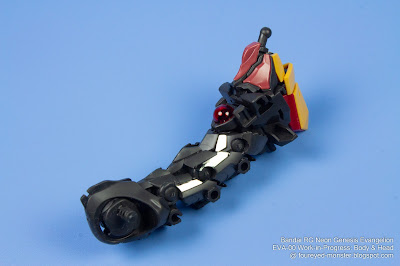.jpg)
.jpg)
.jpg)
.jpg)
.jpg)
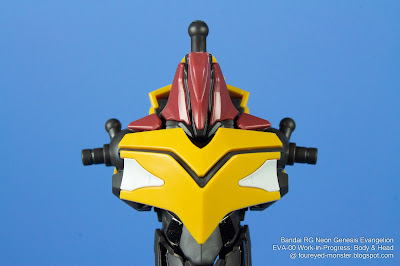.jpg)
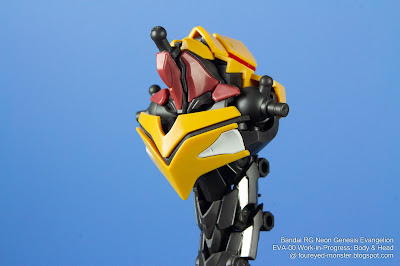.jpg)
.jpg)
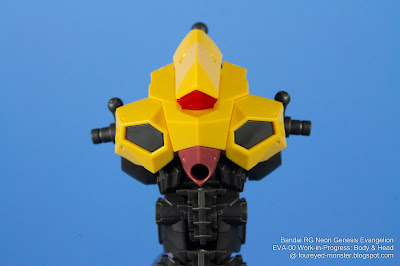.jpg)
.jpg)
.jpg)
.jpg)
.jpg)
.jpg)
.jpg)
.jpg)
.jpg)
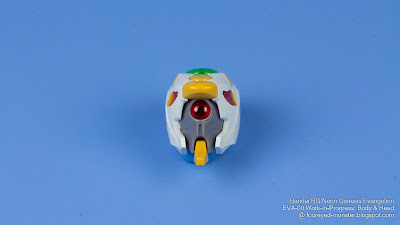.jpg)
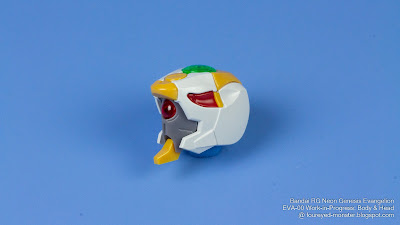.jpg)
.jpg)
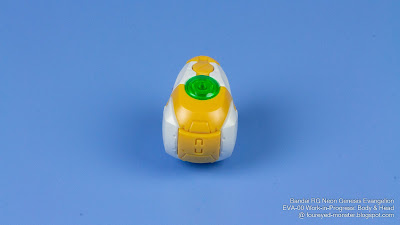.jpg)
.jpg)




.jpg)
.jpg)
.jpg)
.jpg)
.jpg)
.jpg)
.jpg)
.jpg)
.jpg)
.jpg)
.jpg)
.jpg)
.jpg)
.jpg)
.jpg)
.jpg)
.jpg)
.jpg)
.jpg)
.jpg)
.jpg)
.jpg)
.jpg)
.jpg)
.jpg)
.jpg)

.jpg)